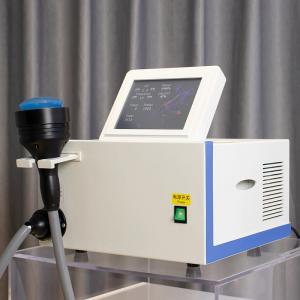
Add to Cart
Hydrotherapy Extracorporeal Shock Wave Shockwave Physiotherapy Therapy Equipment Portable ED Machine

Shockwave Therapy Machine Body Muscle Relaxation Massage Tool Shock Wave Pain Relief With 7 Heads
Physical Shock Wave Machine Ed Treatment Pain Relief Shockwave Therapy Machine
| Technology | Pneumatic shock wave |
| Working Frequency | Max 25HZ |
| Energy | Max 300W |
| Language | Spanish /English ( customized language depends on your requirement ) |
| Function | Cellulite Reduction, Pain treatment,ED therapy |
| Treatment tips | 7 tips |
EXTRACORPOREAL SHOCK WAVE THERAPY IS COMMONLY USED FOR THE FOLLOWING TREATMENT
CONDITIONS:






Shockwave Therapy is particularly effective in addressing various musculoskeletal conditions,
including but not limited to:
Shockwave therapy offers multiple benefits including:
WHO CAN BENEFIT FROM SHOCKWAVE THERAPY?
The Piezowave2 machine delivers thousands of high energy sound wave impulse to the affected tissue.
These impulses are thought to cause micro trauma to scar tissue and arthritic areas. As a result, it
stimulates the body’s natural metabolic activity, creates a healthy inflammatory response, and stimulates healing.
The Piezowave2 machine assists the doctor to identify very specific areas of injury and then delivers a
series of impulses precisely where they are most effective. There is absolutely no pain or discomfort experienced
in areas that are not injured.
In many instances there can be an immediate reduction of pain as well as improved mobility and function.
Since it is non-invasive, there is no need for anesthesia. The most common minor side effect following
treatment is soreness in the treated area that will normally dissipate in a short amount of time.
How many sessions of Shockwave Therapy are needed and how long does it take?
The treatment lasts between 10 and 15 minutes, depending on the condition. On average, three to six
sessions are required. You will require a full assessment to determine the number of treatments you will need.
How successful is Shockwave Therapy treatment?
It depends on the conditions treated. Statistics show over 90 percent of patients experience a reduction in their pain.
In patients that suffer from plantar fasciitis and heel pain related problems, pain reduction is remarkable 39 studies
showed a success rate of 94% in Plantar Faciitis. The overall success rates for all indications ranges between 60% to
80% depending on the conditions treated,. Read about the Shockwave therapy Success Stories from real patients with
a variety of conditions.
Can Shockwave Therapy treat old/persistent injuries, or is it only for new problems?
It can treat both long term chronic conditions and newer acute injuries, there is a great deal of evidence to
show that Shockwave can achieve great results even with historical conditions.
What does Shockwave Therapy cost?
Costs vary from clinic to clinic and depends on the treatment offered. A full consultation with an expert is recommended.
How does shockwave therapy work?
Shockwave therapy is typically administered by a sports medicine physician or athletic trainer with a physician’s
supervision. An athlete’s doctor typically has a detailed understanding of their health history. Athletic trainers
have deep knowledge in the anatomy of joints, tendons, and ligaments and common patterns of sports injury.
During treatment, the clinician holds a shockwave device next to the skin. The device sends shockwaves into
the injured tissues, stimulating increased blood flow and growth hormones to the area, promoting new tissue growth.
There are two types of shockwave therapy. Usually, patients receive both types:
Focused shockwave therapy sends waves into a small area.
Radial shockwave therapy delivers shockwaves over a broader area, for instance, along the length of an injured tendon.
Is shockwave therapy painful?
Most patients report some discomfort during shockwave therapy, but most do not find it painful.
The amount of discomfort depends in part on the person, their injury, and whether the damaged tissues
are close to a bone. (Treatments delivered closer to a bone are generally more uncomfortable.)
The clinician will rub a topical gel on the skin to reduce the discomfort. As soon as the treatment is
over, the discomfort typically stops.